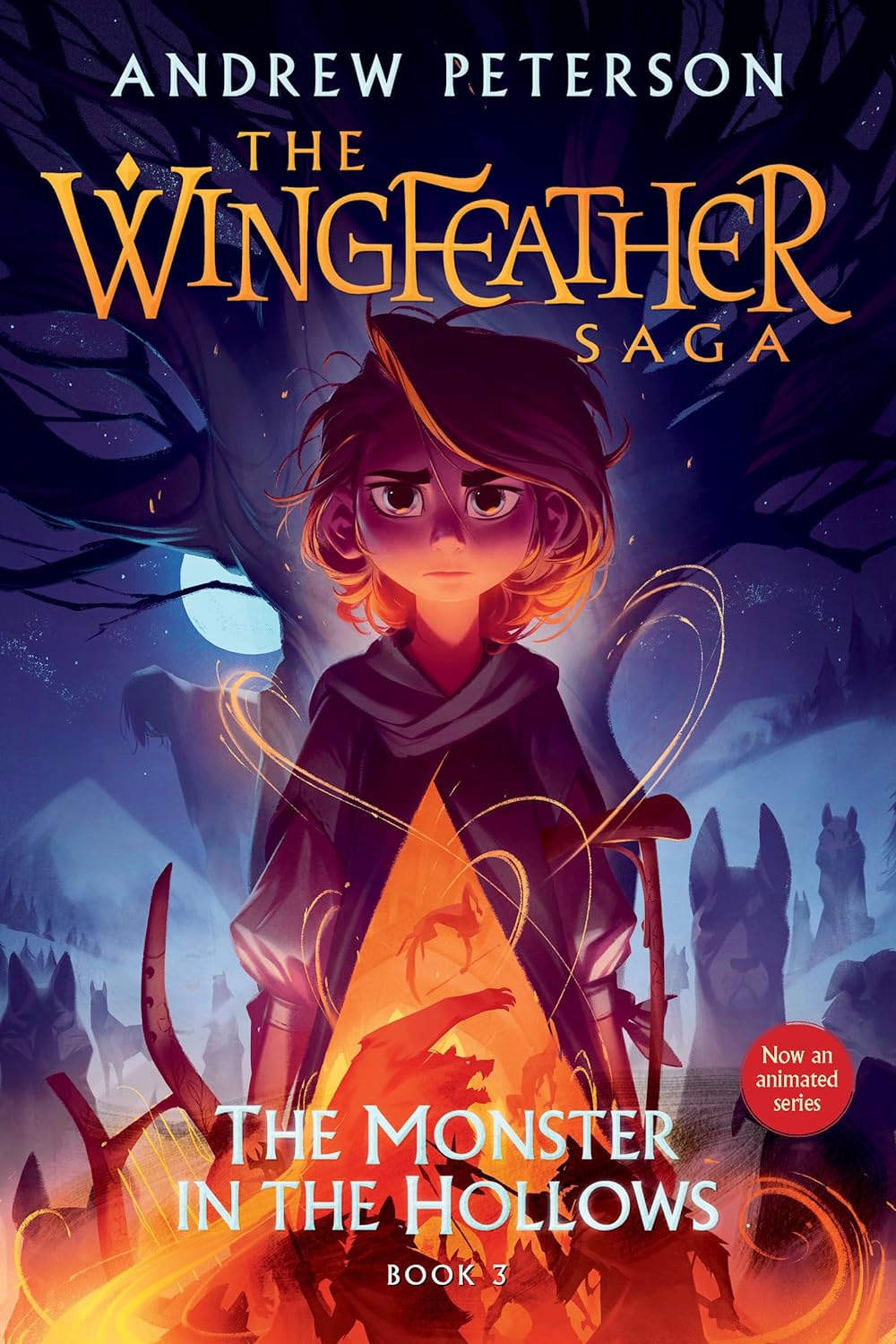“The only time you’re allowed to swing first is in defense of the helpless,” says Podo Helmer (Peterson, 2011; p. 139).
The entirety of The Monster in the Hollows contrasts this statement.
As the Hollowsfolk give themselves over to fear, hatred billows from their mouths and fists. Poor Kalmar suffers constant badgering and bullying during his time at school. The parents spur their children to haze and harass the Wingfeathers to prove they’re as dangerous as they fear.
Janner gets caught in an impossible battle not just for his brother but for their mother who invoked Turalay, tying her fate to Kalmar’s. He wrestles with bitterness for the complications his brother causes his family and the bruises coating Janner’s body as he’s forced to defend the little gray fang.
Janner struggles to see the goodness in Kalmar and suffers through the guilt that if the Hollowsfolk knew Janner's fears, Kalmar would be cast out forever.
When a monster breaks into the hollows and endangers the family, the boys get a clean look at the beast and are struck to the core. Rudric and his men wound and scare the beast off, but Janner won’t soon forget the words he heard in his head… the cloven is hunting them.
Without Artham to defend them, Janner takes a stand for his brother who can do nothing other than helplessly take the beating lest he and his mother be carted off to the dungeon. In a burst of courage, Janner fights the main bully and asserts his position as Throne Warden of the King of Anniera.
Things get better for the boys. They become the greatest of their guild and earn the respect of their instructors and classmates.
Of course, this can’t last forever for a protagonist. One fateful night, Janner discovers Kalmar is the “monster” that’s been stealing livestock. Worst of all, the snow has stopped falling, leaving tracks that will lead right back to Kalmar. His and his mother’s fates are sealed.
With nothing to do, Kalmar leads Janner to his den, full of bones and an awful stench. He shows Janner the injured monster he’s been bringing back to health with the livestock. At first, Janner can’t understand how Kalmar could help a cloven and endanger his family, but it’s their father who explains it best…
Kalmar and his family are locked in the dungeons and brought to a phony trial where Kalmar is not only accused of stealing livestock but also killing a little girl. Nothing they say can convince the Hollowsfolk of his innocence and so gallows are lifted and the King and Queen of Anniera stand, ready to be executed.
That’s when the cloven bursts in with the girl, who Bonifer stole. The Hollowsfolk turn their fear onto the cloven and all but kill it. With proof the WIngfeathers are innocent, you would think this is the end of the book, however, Bonifer brings a host of Fangs into the city to wage war.
Leeli sings a song and the cloven speaks to Janner. Janner asks the monster why he came for them but he already knows… this is Esben WIngfeather—their father. Once dead, now alive, and soon to die again, Esben has saved them in a moment of clarity much like Artham did in the first book.
During the battle, the children are kidnapped and Artham manages to get a message across the mental link to Esben telling him to sing the evil song for the children, to turn what was meant for evil into good.
Esben takes a more natural bear’s form and saves Nia from some fangs. Thinking he’s attacking Nia, Rudric Stabs Esben. I’m not sure he’s coming back from that one with Nia. He had a chance at marrying her before but… I don’t think so anymore.
Nia and Esben run to the wharves and track the kids down. Bonifer taunts the wrong bear. Esben leaps into the water and saves the kids with a wound through his gut and a quiver of arrows in his back.
In his last moments with the kids, he thanks Kalmar for saving him and reminds his son that his brokenness is what gives him the kindness, grace, and understanding that will make him a great king and an even greater man.
The book ends with Kalmar stepping into his place as King. He forgives the Hollowsfolk for their failings and accepts their alliance in the war against the Gnag the Nameless.
How can a dwindling people fight against a growing storm?
I guess we’ll see in the final book!
